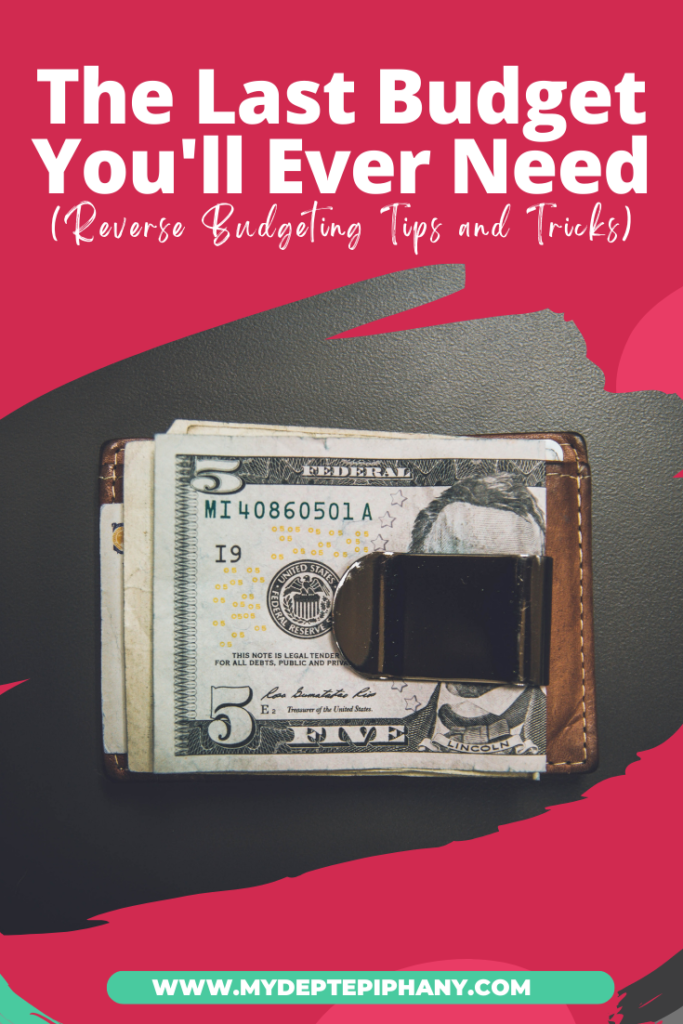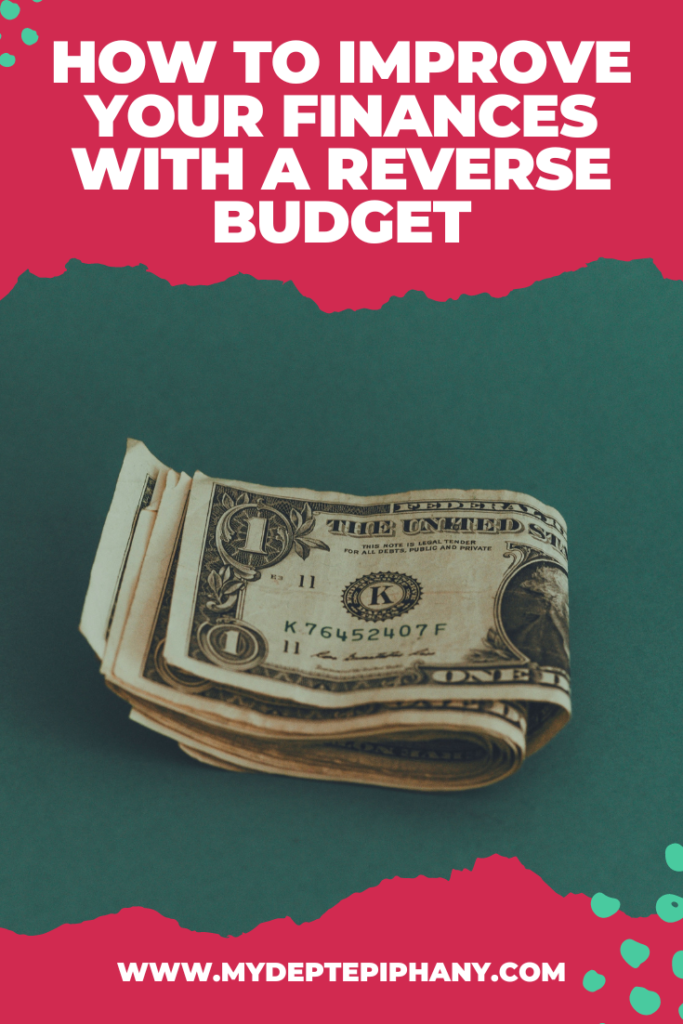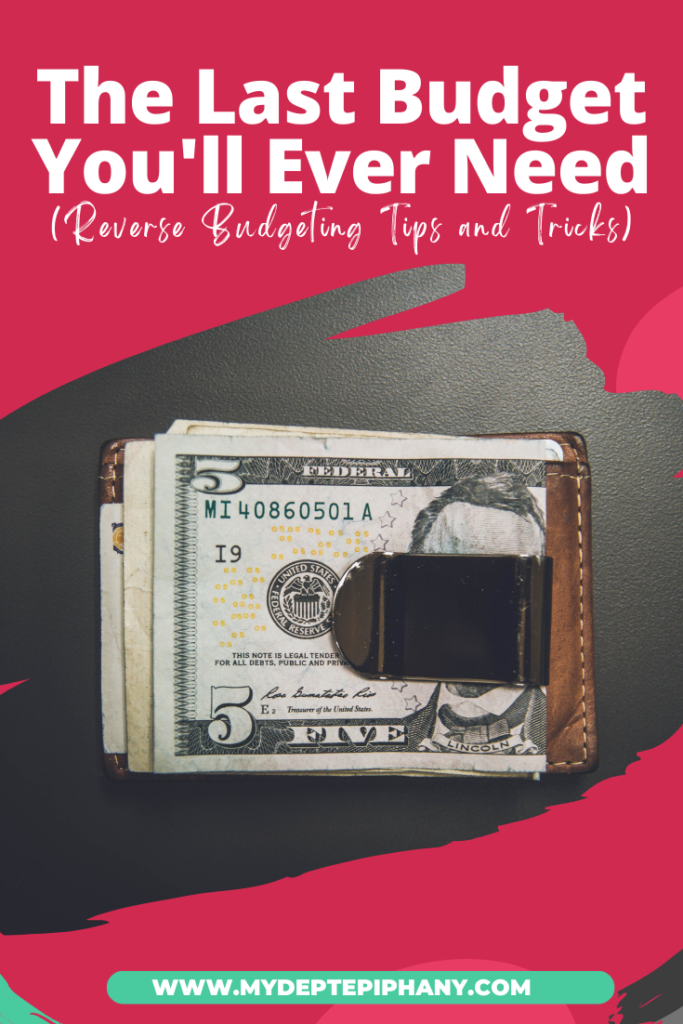Whether you’re new here or not, you have probably learned quickly how much I like budgeting. Things weren’t always this way. I used to be very anti-budget.
Back in 2013 when I started thinking about improving my finances, I had a very low income. The idea of making a budget and actually using it seemed pointless. Then, I hit rock bottom and had nowhere to go up. After realizing I’d much rather be in control of what little money I had at the time vs. letting it control me, I decided to start budgeting.
From there, I went on a journey of truly understanding my relationship with budgeting and developing healthy money habits. It took time to learn how to budget best for my situation.
One of my favorite budgeting styles to this day is the reverse budget. Reverse budgeting is easy, effective, and you can add it to any existing budgeting method you’re currently using.
What is a Reverse Budget?
A reverse budget is when you basically switch the order of handling your money. Traditional wisdom teaches us to start paying bills and covering other important expenses as soon as we get paid. Then, if there’s anything left over, some money can go toward savings or debt payoff.
In reality, this method rarely works. Most people I talk to (and myself included) struggle to actually set aside ‘leftover’ money toward the end of the month. Most times, there’s nothing left over to use. Life happens, expenses come up and your money usually finds a way to spend itself on one thing or another.
With a reverse budget, you start paying yourself first and putting money toward your goals. This could involve adding money to your emergency fund or investment account right when you get paid.
Afterward, you budget with the rest of your money for the remainder of the month.
Related: Budgeting With a Low Income, Yes It’s Possible
How to Stop Living Paycheck to Paycheck Once and For All
How Does Reverse Budgeting Work?
Reverse budgeting isn’t meant to have you sacrifice your basic needs like food and housing. Rather, it helps you prioritize money and financial goals that will improve your life long-term. Personal finance and budgeting are very much multi-faceted. On one end, you want to make sure you can meet your basic needs and live comfortably.
But, you shouldn’t just stay at this point since it can lead to living paycheck to paycheck.
The next aspect we should all be focusing on is how to improve our situation and get ahead financially. There is where things like saving, accelerated debt payoff, and investing come in.
With reserve budgeting you:
- Still keep your existing budget and get clear on your expenses and how much they will cost
- Automatically or intentionally transfer funds to savings and investments first
In order to prioritize savings, you still need to budget for it.
Here’s an example of some financial goals that you can put first so long as it fits in your budget.
- Maxing out your IRA: $542 per month (2023 annual contribution limit is $6,500)
- Emergency fund: $300 per month
- Paying off credit card debt: $350 per month
- Saving for a down payment on a home: $400 per month
Total: $1,592 per month OR $796 per per paycheck if you get paid bi-weekly
Related: How to Stop Living Paycheck to Paycheck Once and For All
How to Start Investing in Stocks With No Regrets
5 Things That Helped me Find Money to Start Investing

How to Start Using a Reverse Budget (For the Best Results)
Using a reverse budgeting style is pretty easy, but these tips will help prepare you for success and results.
Determine Your Goals
Start by getting crystal clear on your goals and how you plan to use your finances to help you reach them. Do you want to buy a house someday or go back to school? Are you hoping to catch up with retirement savings or start a business?
Knowing exactly what your goals are will help you determine how much to save or put toward debt. It also gives you a clear focus and motivation to stick to a reverse budget.
Review Your Spending
Review your spending and budget line-items with a fine-tooth comb to see exactly where your money is going each month. This may sound overwhelming but doesn’t have to be.
- Set a timer for 15 minutes
- Log into your mobile banking
- Then start scrolling through transactions for the past 30 days and jotting them down
Make note of how much you’re spending on budgeted and unplanned expenses. If you’re using budgeting software or an app, the tool may even do most of the hard work for you and categorize your spending clearly.
This is an important step because you’ll need to ask yourself if and where you can reduce or adjust spending to make room for savings goals.
Related: How to Make Your Paycheck Last Two Weeks
Get Organized
Once you know exactly where your money is going and what your goals are, organize your budget to include all your necessary expenses AND saving, debt payoff, and investing.
If you don’t budget for your goals, it will be nearly impossible to prioritize or reach them. Given our example above, paying yourself $1,592 per month with a reverse budget may seem difficult.
However, you never know if you’ll be able to reach this goal or even save a portion of this money if you don’t get organized and run the numbers.
If you have debt, list out all your debts, including the minimum payment and interest amount. This will help you decide how you want to pay them off.
Make it Automatic
Make paying yourself first automatic and easy by setting up transfers to your savings account and investment account. For accelerated debt payoff, you can schedule transfers weekly or whenever you get paid to make sure you’re throwing extra money toward debt.
Remember, all your savings goals should already be included in your budget, so you don’t have to be afraid of overspending or overdrafts.
If you prefer, keep some money in your checking account to serve as a buffer if unexpected costs come up and you have automatic transfers set up during the month to make sure you keep a positive account balance.
Keep in mind that getting organized is going to be key for reverse budgeting.
I provide a free printable bill calendar to all my email subscribers to be sure to download your copy when you sign up for my list!
Maintain Your Budget Regularly
A budget is not just something you set and forget about. Make sure you’re actively managing your spending and reviewing your budget at least once per week.
Feel free to make any changes to your savings goals whenever you feel necessary. The beauty of budgeting this way is that you can be pretty flexible so long as you’re meeting your basic needs.
Take it Step-By-Step
Don’t feel that you have to become a master at reverse budgeting to benefit from this method. Start slow and develop a habit of saving money and throwing extra funds to debt when you can. Even if you can afford to save $100 per month and pay yourself first, this is a great start.
Get a handle on affording your basic needs first and paying any debt that’s creating a burden on your finances. You may find that your money gets freed up once you get rid of a few credit card balances.
Also, realize that you may already be practicing a reversed budget if you contributing to a 401(k), since a portion of your paycheck gets invested before anything else. If you want to boost retirement savings, see if you could increase your contributions by 1%. Every bit counts.
Related: How to Save Your First $1,000 This Year
Pros and Cons of Reverse Budgeting
Pros:
- Helps you prioritize saving and paying yourself first
- Easy to use with any budgeting method you’re currently using
- Helps you focus on the big picture and improving your financial situation long-term
- Easy to automate
Cons:
- May require you to be stricter with other expenses in order to pay yourself first
- Some math and sacrifice may be required – (but it’s all for the greater good!)
- May not work for you if you don’t have the discipline yet to direct more money toward future goals
A Reverse Budget is Worth a Try
As you can see, I’m all for a reverse budget. If you’re serious about improving your finances and reaching certain goals, a reverse budget is well worth a try.
You’ll need to truly commit to it to see the best results, though. Use these tips to help you get started and let me know if you have any questions along the way.
Be sure to check out my other budgeting posts:

Stop Worrying About Money and Regain Control

Ready to regain control of your money? Take the first step with this free starter pack which includes:
- 2 Monthly Bill Calendar templates
- 1 ‘Start Paying Off Your Debt’ Checklist
- 1 ‘Drastically Cut Your Expenses’ Checklist


